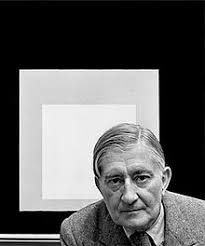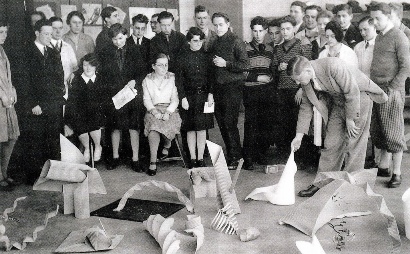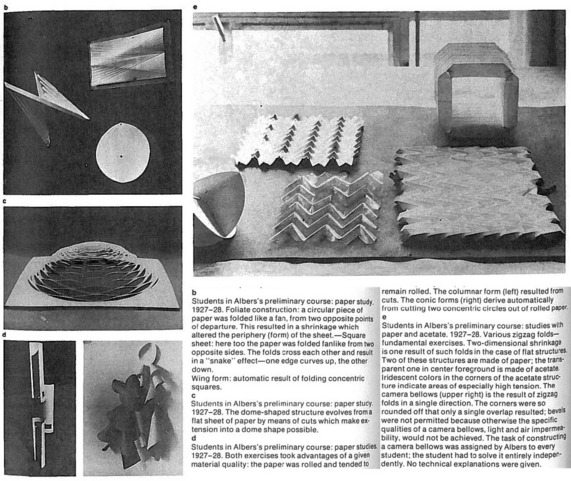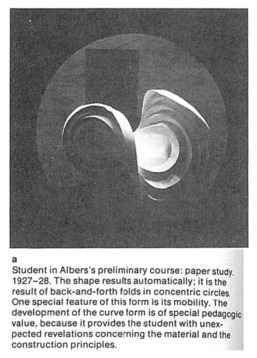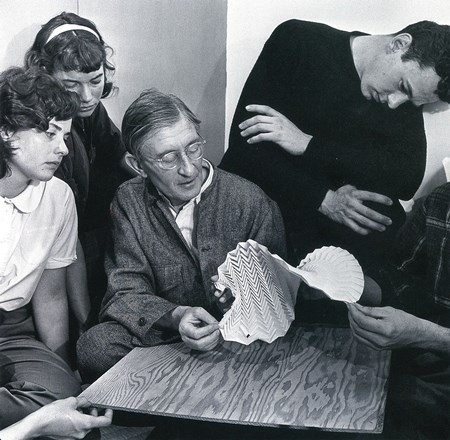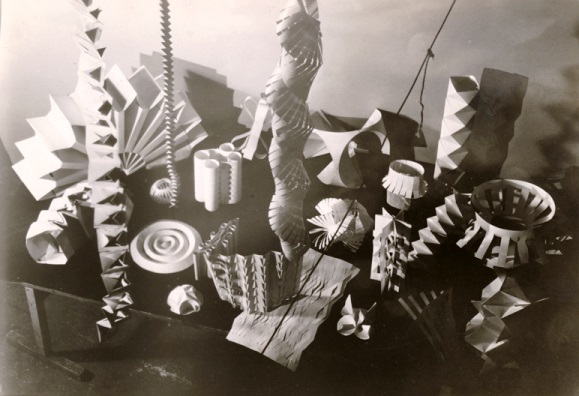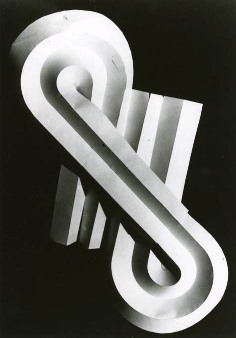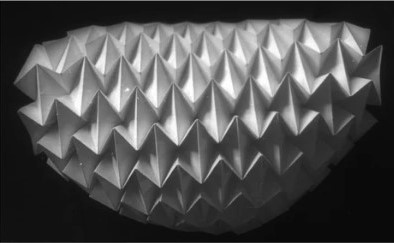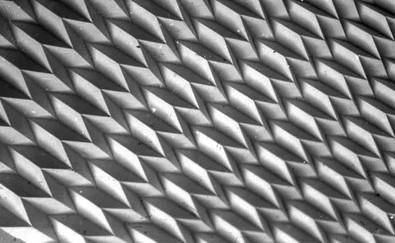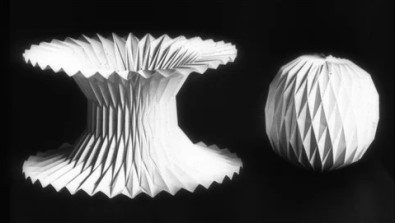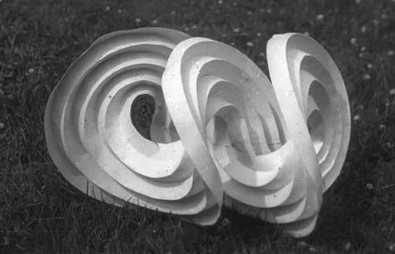| The Public Paperfolding History Project
x |
|||||||
| Joseph Albers and Paperfolding at the Bauhaus / Black Mountain College | |||||||
| This
page is being used to collecxt information about the
history of Joseph Albers (1888 - 1976) and paperfolding
at the Bauhaus / Black Mountain College. Please contact
me if you know any of this information is incorrect or if
you have any other information that should be added.
Thank you.
********** Joseph Albers at the Bauhaus The Bauhaus was a German school of art and design that existed from 1919 to 1933. During this time it moved from Weimar to Dessau in 1925 and then to Berlin in 1932. In 1933 the school came under pressure from the Nazi party, accused of being a centre of Communist idaes, and was closed as a safety precaution by its own leadership. At the age of 32, in the spring of 1920 , Joseph Albers enrolled in the Bauhaus school’s introductory course, known as the Vorkurs, which was then run by Johannes Itten on expressionistic lines. In late 1922, following disagreement with Walter Gropius about the course’s direction, Johannes Itten left the Bauhaus, creating an opportunity for Albers to be appointed as a Vorkurs instructor alongside Laszlo Moholy-Nagy. According to the article 'Experimentation, Not Replication: Josef Albers and the Vorkurs' by Oliver Barker, available at https://www.bauhaus-dessau.de/experimentation-not-replication.html 'Albers focused his energies primarily on teaching the materials and design components of the course. As a Bauhaus educator Albers approached this role with characteristic intensity, immediately removing the expressionistic tendencies that had characterized Itten’s teaching of the course. Instead, Albers instigated a methodology categorized by problem solving in which no single method existed for the resolution of the exercises, encouraging students to find their own solutions to the tasks presented.' 'Albers challenged his students to investigate the internal properties of materials, exploiting their structural possibilities and limitations. Working with a wide range of materials – paper, wire mesh, corrugated cardboard, glass, plastic, sheet metal, tin foil, matchboxes – students were encouraged to examine the dormant possibilities of these substances. These exercises defined what Albers identified as “…learning to see both statically and dynamically…” and further encouraged students to learn experientially through their own exploration and practice, placing emphasis on the need for “…intimate contact with the material through one’s own fingertips…” 'As an initial exercise Albers had his students begin their exploration of materials by studying the three-dimensional potential of paper. By folding and fastening paper in ways that would place “emphasis on the edge…and test its performance under tension and pressure,” the resulting creations were varied and diverse. While there was no one way to approach each exercise, Albers encouraged students to plan their folded paper models in advance, ensuring that the economy of form was measured in relation to the anticipated expenditure of material and labor. The resulting studies, captured in an iconic series of photographs by fellow Bauhausler Erich Consemüller, show architectonic structures achieved through the cutting and folding of paper without any loss or waste placing emphasis on the previously unrecognized potential of paper as a material. The textural and malleable properties of this material were also explored through repeated folding to create prismatic structures and fluid, organic forms. By pushing the Vorkurs in these new exciting directions, Albers enabled his students to explore the hidden three-dimensional aptitude of paper. The resulting forms from these studies inhabited the realms of positive and negative space thus revealing the latent potential at odds with paper’s traditional applications.'
Albers with his Volkurs course students. Photo by Erich Consemüller ********** These images are from 'Bauhaus: Weimar, Dessau, Berlin, Chicago' by Hans M. Wingler, MIT Press, 1969 and 1978. They show a number of folded objects produced by Joseph Alber's students during the years 1927/8.
The top left picture shows a Hyperbolic Parabaloid. The top right picture shows several Zigzag Corrugations, both of which, as far as I know, are first known from the Bauhaus during this period. The top right picture also shows what appears to be a Puff Ball made from three interlinked circles of card. The dome-shaped cut and fold structure (middle left) is otherwise known from Cobweb Valentines. **********
This second image from the same source shows another type of Concentric Crease Design, which I call the Saddle. This is also first known from the Bauhaus during this period. ********** Joseph Albers at Black Mountain College According to the website of the Black Mountain College Museum and Arts Center, which was founded in 1993 to celebrate the history of Black Mountain College, 'Black Mountain College was born out of a desire to create a new type of college based on John Dewey’s principles of progressive education. The events that precipitated the college’s founding occurred simultaneously with the rise of Adolf Hitler, the closing of the Bauhaus school in Germany, and escalating persecution of artists and intellectuals in Europe. Some of these refugees found their way to Black Mountain, either as students or faculty ... The founders of the college believed that the study and practice of art were indispensable aspects of a student’s general liberal arts education, and they hired Josef Albers to be the first art teacher. Speaking not a word of English, he and his wife Anni left the turmoil in Hitler’s Germany and crossed the Atlantic Ocean by boat to teach art at this small, rebellious college in the mountains of North Carolina.' And 'Black Mountain College was a liberal arts college that placed the arts at the center of the curriculum. While students could study anything from Sociology to Mathematics, the school was established such that every student must first take John Andrew Rice’s course on Plato and Josef Albers’ Foundations of Art.' Joseph Albers remained at Black Mountain College until 1949, when he left as a result of internal divisions. One of the students of Albers at Black Mountain College was Ruth Asawa, some of whose sculpture makes use of paperfolding, either as a medium or an inspiration.
Josef Albers and students at Black Mountain College 1946. **********
Experiments in paperfolding from Black Mountain College **********
Design said to be by Josef Albers, 1940s **********
Design from Black Mountain College c1943 **********
Said to be c1937-1947 **********
Said to be c1935-1942 **********
Not dated. From Black Mountain College or possibly Yale (see below). ********** After Black Mountain In 1950, Albers left Black Mountain to head the department of design at Yale University where he taught until he retired 1958. ********** |
|||||||
